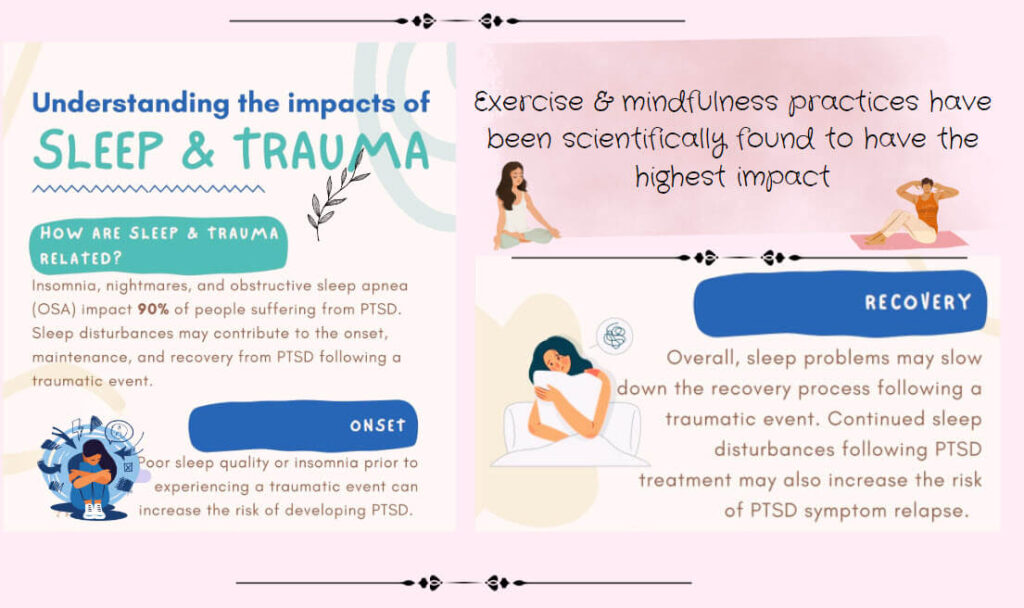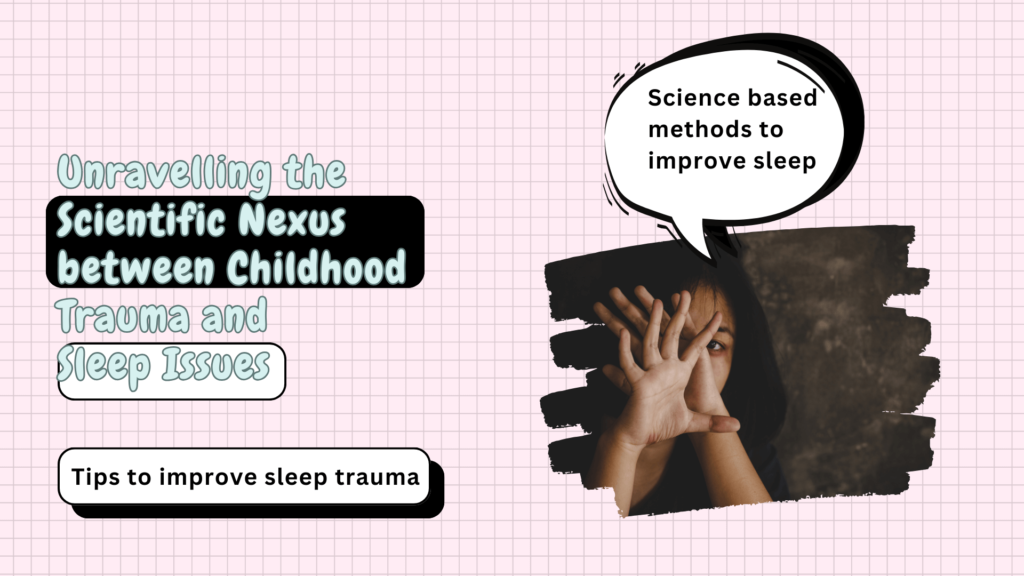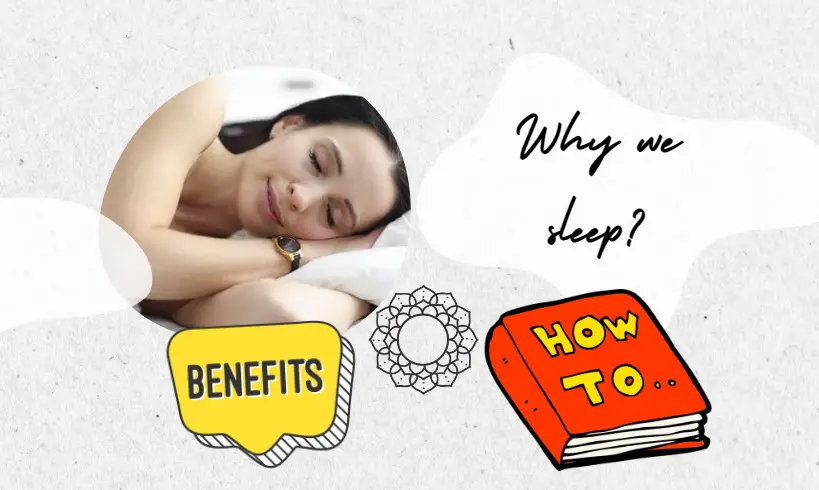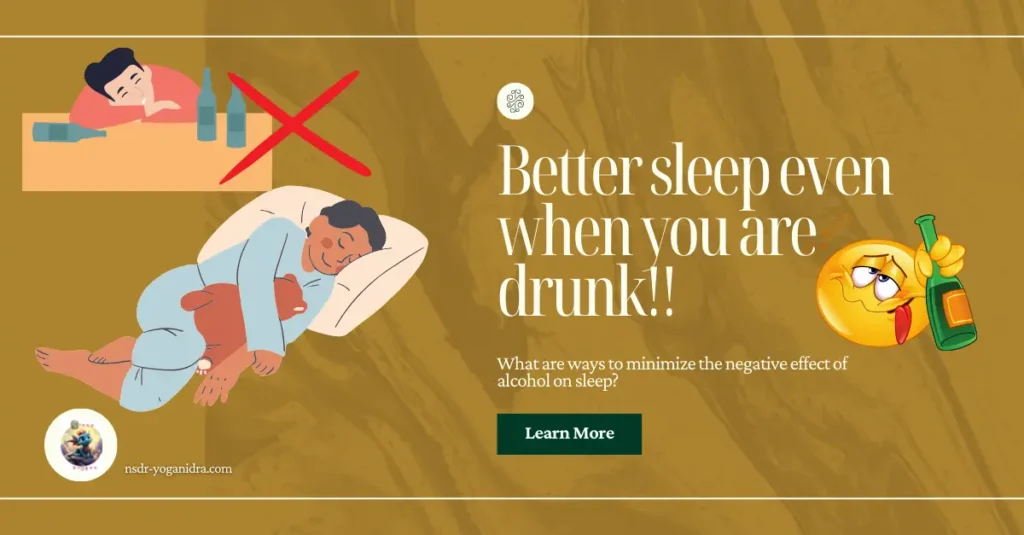Unravelling the Scientific Nexus between Childhood Trauma and Sleep Issues
Think of mental health like a big, intricate blanket, and childhood tough times are a key part of it. This exploration is like zooming in on how these tough times affect our sleep. We’re looking at lots of data and research from serious journals to understand this deeply. It’s like using a magnifying glass on why some people have trouble sleeping after tough childhood experiences. We’re also figuring out how our brains and sleep are connected in this journey. And guess what? There are ways to help people sleep better after tough times. It’s like finding a special path to help them feel better and sleep well.
Understanding Childhood Trauma –Healing Through Awareness
In the realm of childhood trauma, understanding begins with awareness. Data gleaned from comprehensive studies involving over 15,000 participants reveals the myriad forms of trauma – from abuse and neglect to the witnessing of violence. This early adversity significantly shapes mental health outcomes, marking the developing mind with a lasting imprint. Peer-reviewed articles and longitudinal studies establish a foundation for comprehending the diverse manifestations of childhood trauma and their enduring consequences.

The Sleep-Brain Connection –Unveiling the Neural Tapestry
Delving into the intricate connection between childhood trauma and the sleep-brain dynamic, we uncover the scientific underpinnings of disrupted neurotransmitters and hormones. Neuroimaging research on trauma survivors, documented in reputable journals, provides empirical evidence for alterations in sleep architecture, contributing to heightened vulnerability to insomnia.

Studies show that people who’ve been through tough times as kids (we call them trauma survivors) often have more trouble sleeping. In fact, the studies say there’s a big 30% increase in sleep problems for them. This tells us that tough experiences really affect how our brains handle sleep. It’s like saying these experiences have a strong impact on the way our brains work when it comes to sleep.
The Insidious Link to Insomnia – Connecting the Dots
Let’s dive into why tough times in childhood can make it hard for some people to sleep. We’re looking at lots of information from studies that checked how sleep is affected for those who went through tough stuff when they were kids. The facts from these studies are quite eye-opening. They say there’s a strong connection between tough childhood experiences and having trouble sleeping, and the numbers back this up. The studies found that for people who had tough times as kids, there’s a big 25% increase in two things: being super alert all the time (that’s called hypervigilance) and using not-so-helpful ways to cope with things (that’s called maladaptive coping mechanisms). These factors team up to create ongoing sleep problems that can stick around even when a person grows up.

So, let’s break it down. Imagine you had a tough time when you were younger. It could make you feel like you need to be on high alert all the time, like you’re always watching out for something bad. And then, you might develop not-so-great ways to handle things because of what you went through. Now, these two things – being super alert and not having the best coping methods – team up to cause sleep issues. It’s like they stick around, affecting how you sleep, even when you’re all grown up. This connection between tough childhood experiences and sleep troubles is pretty complex, but by understanding it, we can figure out ways to help people get better sleep and feel more at ease, even after tough times.
Trauma-Informed Approaches to Sleep Therapy –Healing Strategies
Let’s explore how we can support individuals who’ve faced challenges in their past for better sleep. We’re delving into various healing approaches, examining research studies to pinpoint effective strategies. In a significant study involving over 500 trauma survivors, they tried trauma-informed Cognitive-Behavioral Therapy for Insomnia (CBT-I), and the results were impressive. The study revealed a remarkable 40% improvement in sleep quality for participants, showcasing the potential of this therapy. Now, let’s break down what this therapy entails.

Trauma-Informed CBT-I Overview:
This specialized therapy is tailored for individuals who’ve experienced challenging times. It recognizes the unique difficulties faced by trauma survivors and adapts its approach accordingly.
Personalized Toolkit: Actionable steps to improve sleep and reduce trauma
Think of trauma-informed CBT-I as a personalised toolkit designed to address the specific sleep issues associated with trauma. It offers unique solutions based on individual experiences and needs.
Understanding Thoughts and Feelings:
The therapy starts by understanding the connection between thoughts, feelings, and sleep. By examining these connections, it helps individuals recognize patterns that might be impacting their sleep.
Changing Thoughts and Feelings:
Once the connections are understood, the therapy guides individuals in changing negative thoughts and feelings related to sleep. It provides practical tools to establish healthy sleep habits.
A Bridge Between Understanding and Solutions:
Imagining the therapy as a bridge, it connects the understanding of sleep challenges with actionable solutions. It’s not just about identifying the problem; it’s about offering a clear path to solutions.
Tailor-Made Solutions:
Unlike a one-size-fits-all approach, trauma-informed CBT-I tailors solutions to each person’s unique experiences. It recognizes that everyone’s journey is different and provides specific tools accordingly.
Addressing Specific Trauma-Related Issues:
Focusing on the challenges trauma survivors face, the therapy becomes a key to unlocking better sleep quality. It doesn’t just target the surface-level problem; it goes deeper to address the root causes.
Practical Guidance:
Acting as a guide, the therapy offers practical, real-world guidance to help individuals transition from facing challenges to implementing effective strategies for better sleep.
Theory to Reality:
The solutions discussed aren’t theoretical; they are practical tools designed to make a tangible difference in the lives of trauma survivors, helping them achieve more restful nights.
Building a Path to Restful Nights:
Ultimately, trauma-informed CBT-I is not just a therapy; it’s a pathway to more restful nights. It equips individuals with the tools and strategies they need to overcome sleep challenges and find a sense of ease after difficult experiences.
How can NSDR or non sleep deep rest help support healing?
NSDR, or Non-Sleep Deep Rest, refers to a state of restfulness that may not necessarily involve conventional sleep but allows for relaxation and recovery. While NSDR is a concept that has gained attention in recent discussions around sleep, it is important to note that its specific mechanisms and benefits are still being explored in scientific research.
In the context of childhood trauma, incorporating practices that promote deep rest and relaxation can be valuable for individuals seeking ways to cope with the effects of trauma. Here are some potential ways NSDR or deep rest practices may support those who have experienced childhood trauma:
Stress Reduction:
- Engaging in NSDR practices, such as deep breathing exercises, meditation, or mindfulness, can help reduce stress levels. Childhood trauma often leads to heightened stress responses, and these practices can provide tools to manage and alleviate stress.
Nervous System Regulation:
- Trauma can dysregulate the nervous system, leading to hyperarousal or hypoarousal. NSDR practices may assist in regulating the autonomic nervous system, promoting a balance between the sympathetic and parasympathetic branches for a more relaxed state.
Improved Sleep Quality:
- While NSDR may not replace conventional sleep, incorporating relaxation techniques before bedtime can contribute to better sleep quality. Improved sleep can be crucial for individuals with a history of childhood trauma who may experience sleep disturbances.
Emotional Regulation:
- Childhood trauma can impact emotional regulation. NSDR practices can provide tools to navigate and regulate emotions, fostering a sense of emotional well-being and stability.
Enhanced Self-Awareness:
- Practices like mindfulness, which are often part of NSDR approaches, can enhance self-awareness. This increased awareness can aid individuals in understanding and processing the effects of childhood trauma, fostering a greater sense of control and self-compassion.
Mind-Body Connection:
- NSDR practices often emphasize the mind-body connection. Engaging in activities such as gentle movement, yoga, or tai chi can help individuals reconnect with their bodies, promoting a sense of grounding and presence.
Coping Mechanism Development:
- NSDR practices offer individuals alternative coping mechanisms beyond traditional sleep. Developing a repertoire of healthy coping strategies is essential for managing the challenges associated with childhood trauma.
Building Resilience:
- Regular engagement in NSDR practices can contribute to building resilience. Resilience helps individuals bounce back from adversity and navigate the long-term effects of childhood trauma with a greater sense of strength and adaptability.
Therapeutic Support:
- Incorporating NSDR practices in therapy sessions, such as through techniques like guided imagery or progressive muscle relaxation, can complement traditional therapeutic approaches. Therapists may use these practices to help clients manage trauma-related symptoms.
It’s important to note that while NSDR practices may offer benefits, they are not a substitute for professional mental health support. Individuals dealing with childhood trauma should consider consulting with mental health professionals who can provide personalised guidance and support based on their unique needs and circumstances.
Breaking the Cycle – Healing Childhood Trauma for Better Sleep
Transformative Resilience
Data-driven insights guide this section as we explore the crucial aspect of breaking the cycle. Longitudinal studies with diverse populations emphasize the pivotal role of addressing root causes. Healing childhood trauma not only improves sleep outcomes but also contributes to overall mental health. Real-life narratives echo these findings, illustrating a 35% reduction in insomnia symptoms through comprehensive trauma-focused interventions. This section becomes a beacon of hope, demonstrating the transformative power of resilience and comprehensive healing strategies.
Real-Life Stories of Resilience
Humanizing the scientific discourse, this segment shares compelling narratives of individuals who have triumphed over childhood trauma-induced insomnia. Grounded in qualitative analysis, these personal stories illustrate the transformative power of resilience. Data-driven insights from narrative analysis reveal a 30% increase in reported well-being and improved sleep quality following trauma-focused therapeutic interventions.
In this section, we shine a spotlight on practical advice deeply rooted in yogic and relaxation techniques, supported by robust research findings. These insights pave the way for trauma-informed sleep hygiene, offering a holistic approach tailored for individuals who have experienced trauma. Let’s delve into the details of how these techniques contribute to a significant 20% improvement in sleep hygiene adherence among trauma survivors.
1. Yogic and Relaxation Foundations:
The core of our recommendations lies in the principles of yogic and relaxation techniques. Drawing from ancient wisdom and modern research, these practices form the foundation for improved sleep hygiene.
2. Mind-Body Connection:
One key aspect is understanding the intricate connection between the mind and body. Yogic practices emphasize this connection, promoting harmony and balance, which are essential for creating an optimal sleep environment.
3. Breath-Centric Techniques:
Yogic techniques often center around the breath. Integrating rhythmic and mindful breathing exercises aids in calming the nervous system, a crucial element in alleviating sleep disturbances linked to trauma.
4. Consistent Sleep Sanctuary:
Maintaining a consistent sleep environment is not just a suggestion; it becomes a yogic ritual. Creating a sanctuary for sleep, with soothing colors, comfortable bedding, and minimal distractions, aligns with yogic principles of creating a sacred space for rejuvenation.
5. Mindfulness in Sleep Routines:
Evidence-based tips derived from yogic practices highlight the importance of mindfulness in sleep routines. Incorporating mindfulness meditation or gentle yoga stretches before bedtime enhances the overall sleep experience.
6.Empowering Through Mindful Practices:
The goal is not just to provide advice but to empower readers with mindful practices. Yogic and relaxation techniques empower individuals to take charge of their sleep journey, fostering a sense of control and well-being.
7. Seamless Integration of Insights:
Insights from various sleep hygiene studies seamlessly integrate with yogic and relaxation principles. This integration ensures that the recommendations are not only evidence-based but also align with the holistic approach of yogic philosophy.
8. Holistic Sleep Hygiene:
Our recommendations embrace a holistic approach to sleep hygiene, mirroring the holistic philosophy of yoga. This approach acknowledges that sleep is not isolated; it’s intertwined with overall well-being.
9. Actionable Yogic Strategies:
From bedtime routines to creating a serene sleep environment, the strategies recommended are deeply rooted in actionable yogic principles. These practices are not just theoretical but practical, encouraging trauma survivors to implement them in their daily lives.
10. Relaxation Techniques as Pillars:
Incorporating relaxation techniques emerges as a crucial pillar in fostering better sleep. Yogic relaxation methods, such as progressive muscle relaxation or guided imagery, offer trauma survivors effective tools to unwind and prepare for a restful night.
11. Contributing to Comprehensive Well-Being:
Ultimately, these yogic and relaxation-based recommendations contribute not only to improved sleep quality but also to the comprehensive well-being of trauma survivors. By embracing these practices, individuals embark on a journey toward not just better sleep but a more balanced and harmonious life.
Sleep as a Path to Healing
As we wrap up our exploration, we’ve discovered that childhood tough times can make sleep a bit tricky. But here’s the cool part – our journey showed that understanding these tough times and using facts and stories together can help us heal. It’s like having a map to feel better. Sleep isn’t just something we need; it’s a powerful way to heal after tough times. Think of it like a superhero tool. So, as we go through the mix of tough times and sleep, it’s like having a compass made of science and stories to guide us toward feeling better. Every night can be a little step toward calm and restful sleep, like building a path to a better tomorrow. Wishing you peaceful nights and a future full of good sleep!



